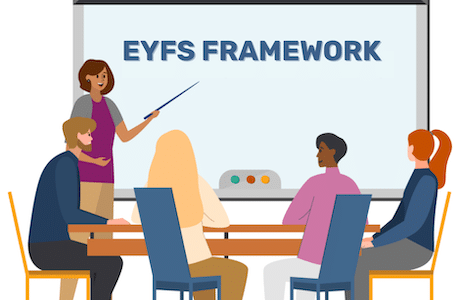Guest Author: Jon Trew
The 2024 UK Children’s Society ‘Good Childhood Report’ provides some especially useful insights for all those involved in safeguarding within both schools and colleges. The report has been undertaken annually since 2009, so it enables us to see some interesting and sometimes disturbing changes in the welfare and wellbeing of young people in the UK today.
This year’s report recorded the concerns of over two thousand 10- to 17-year-olds as well as their parents and carers. The Good Childhood Report compares data from three robust sources on the wellbeing of children and young people: The Understanding Society’s UK Longitudinal Household Survey, The Children’s Society’s annual household survey and the PISA (the OECD’s Programme for International Student Assessment). The 2024 PISA surveyed over 700,000 15-year-olds across 81 countries, allowing for comparison of the results to those across Europe.
Understanding wellbeing: more than just happiness
Wellbeing is not the same as happiness – though happiness is a part of it. The UK Government’s wellbeing and health policy describes “Wellbeing is about feeling good and functioning well and comprises an individual’s experience of their life; and a comparison of life circumstances with social norms and values. It is the ability to ride out challenges and difficulties and includes security and confidence that the future will turn out well.”
Perhaps the most worrying findings of the report was the clear decline in UK children’s wellbeing in five of the six areas of children’s happiness recorded since 2009/10. These areas of increased unhappiness were life as a whole, friends, appearance, school and schoolwork. There were significant differences in life satisfaction between boys and girls. While one in five (19.8%) boys reported low life satisfaction, the figures for girls aged 15 in the UK was almost one in three (30.9%).
As poor mental health and wellbeing have been shown to have a marked effect on attendance and performance in school, it is essential to understand and support young people to ensure the best outcomes.
How the cost of living is impacting children’s wellbeing
While the long-term effects of Covid may be a factor in the decline of wellbeing felt by children in the UK, it cannot account for the how wellbeing in the UK has declined in comparison with 15-year-olds across Europe. According to the report, in 2022 the UK had the lowest average overall life satisfaction among 15-year-olds across 27 European countries. The UK also had the largest gap in average life satisfaction between the 25% most advantaged and the 25% most disadvantaged 15-year-olds.
An area of great concern outlined in the report was that of rising costs. Almost a quarter (23%) of parents and carers said that they had found it ‘quite’ or ‘very’ difficult to manage financially. These parental worries were also being picked up by their children. Two in five (41%) children and young people were ‘very’ or ‘quite’ worried about this issue. Over half of parents (53%) reported that they had struggled to afford a holiday away from home, and over two in five reported struggling to afford activities outside of school (43%) and celebrations on special occasions (41%). Again, these concerns were being picked up by children who reported that rising costs were affecting them.
Half (50%) of all children and young people reported that not having money had stopped them from doing something they wanted to do in the past six months at least once or twice, like going out with their friends or going on a school trip.
How the wellbeing of UK children compares to those in Europe
While wellbeing may be challenging to objectively quantify, issues like food deprivation and school absences are more easily demonstrated. Based on 15-year-olds’ responses to PISA 2022, the UK was the country with the fourth highest rate of food deprivation. Only Romania, Bulgaria and Lithuania had slightly higher rates. Over one in 10 (11%) children aged 15 in the UK reported that they had skipped a meal due to a lack of money once a week or more in the last 30 days. Monitoring signs of malnutrition as a potential safeguarding concern is essential, as the effects can last beyond school and well into adult life.
Another worrying issue identified was that the report found the UK had the highest levels of bullying in Europe. In school attendance it had the third highest rate of long-term school absences of more than three consecutive months (of the 23 countries where data was available for this measure).
Reading reports like this, it is easy to just see doom and gloom, however there were some areas where the UK was doing well. Countries in the UK ranked high in terms of family support, reportedly the seventh highest out of 27 in Europe. The UK also placed amongst the top surveyed countries in Europe for the best ICT availability at home and for ICT regulation in schools.
How safeguarding software can support the wellbeing of children
The findings in the Good Childhood Report highlight the importance of monitoring all aspects of wellbeing in children and young people as an important safeguarding concern to ensure they are able to attend and perform well in school. Safeguarding software like CPOMS StudentSafe is essential for DSLs, teachers and leaders working with children to easily log concerns, securely share information and provide preventative action where needed to ensure the best outcomes. With the ability to create your own categories and areas of concern, StudentSafe allows for monitoring all potential issues such as bullying, malnutrition and more.
With a full chronology for every student in your setting, safeguarding leads can monitor the cumulativeness of concerns, particularly when these are concerns about neglect, poverty and wellbeing. Each of these concerns on their own may not meet the level of ‘significant harm’ and could slip through the gaps, but when looked at together over time, safeguarding staff can identify patterns which indicate a serious safeguarding issue and take appropriate action.
To take safeguarding to the next level, adding CPOMS Engage for Schools to your setting provides a powerful platform designed to help streamline the secure sharing of safeguarding, child protection and welfare information across multiple touchpoints. Through CPOMS Share Contracts, schools can exchange sensitive pupil data seamlessly with local authorities, trusts and other institutions. This not only saves time but also improves collaboration, enabling a more timely and effective approach to ensuring pupil safety and wellbeing. Features such as domestic violence notifications and simplified data-sharing processes empower schools to make informed decisions while maintaining complete control over shared information.
Want to see how CPOMS software can transform your safeguarding processes? Book a demo today to discover how it could benefit your setting.




